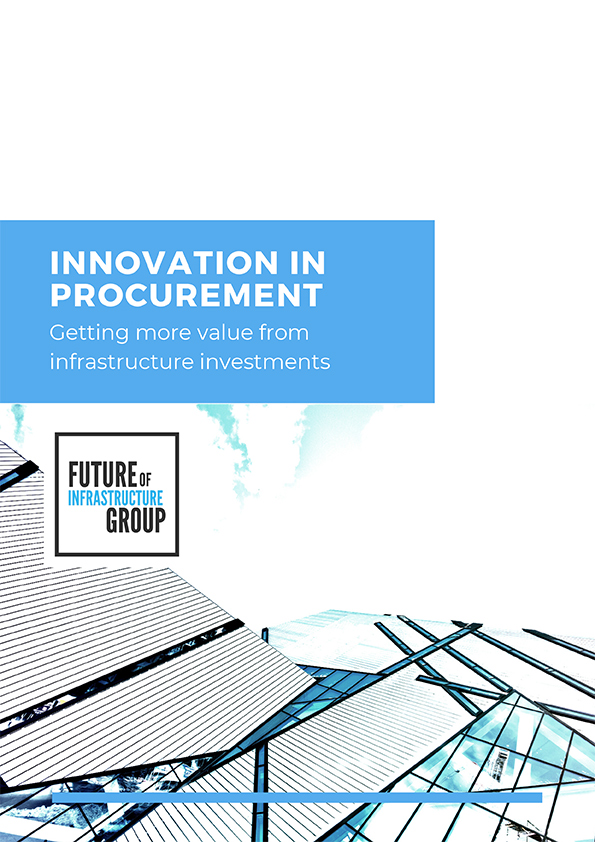Innovation in Procurement
Published 2020
IMAGE CREDIT: WorldofDominic / Shutterstock.com
Labour productivity in the construction sector has remained flat for several years. Research by McKinsey shows that since 1945 productivity has barely grown at all for construction, but it has risen by 1500% for sectors like manufacturing, retail and agriculture. With new technologies and different approaches to infrastructure life cycles emerging, there should be more innovation in the sector. Canada has an opportunity to further enhance its credentials as a global centre of excellence of innovation in infrastructure. By developing a system that enables innovation, it would see greater value for investment, and the opportunity to develop better products and services in the province to export around the world.
In 2018 Canada invested $85.8 billion in infrastructure across the country, with around $58 billion coming from different levels of government and the broader public sector. 585,000 direct and indirect jobs are supported by investment in infrastructure.
To deliver innovation, companies in the infrastructure sector need certainty to make long-term investments in skills, equipment, and research. This comes from a stable and predictable pipeline of projects and consistent levels of government spending.
Governments can provide this through more effective use of business cases and data to determine long-term priorities that become less prone to political risk if there is a change in government for example. Based on feedback from industry, another major factor holding back innovation is the procurement process and evaluation being used for infrastructure.
An over-reliance on technical output specifications (such as types of materials to be used, or methods to be used in construction) and the way bids are scored creates a downward spiral that focuses too much cost as the primary deciding factor for who delivers a project.
Long-term this is creating a problem in the market where if bidders have little or no ability to bring different solutions to the table it forces bidders to potentially cut corners or rely on change orders to make a project profitable. This creates an adversarial relationship on the project which prevents the public and private sector from working together to come up with solutions.
Recommendations
- Develop an Innovation Strategy to drive a culture change across the organization, partner ministries and municipalities, and contractors
- Appoint an innovation leader with the mandate and resources to champion innovation on an organizational and project level
- Identify systemic or major challenges and provide incentives for industry to solve them via competitors or procurement
- Change guidance around early supplier engagement to promote regular dialogue between owners and bidders to better develop solutions for end users
- Provide clear opportunities and a process to propose new ideas as early as possible in a protected environment with financial benefits if ideas are subsequently used but a bid is lost
- Restrict use of technical specifications to those that are necessary from a safety and service delivery perspective and use a process for challenging those included on a project that may harm innovation
- Develop clear guidelines and training on use of outcome-based specifications with methodologies for calculating benefits across the whole life of a project from design to end-of-life
- Be clear and transparent on risk and provide well-defined frameworks or capping around risk-sharing
- Introduce a clear, quick and effective process to introduce alternative concepts and ideas
- Develop a period for “value engineering” after contract award where new ideas can be introduced with a shared goal to reduce cost and deliver value with any gains shared
- Build an incentive structure for procurement and contract management based on pain share-gain share to reward exceptional performance and innovation
- Develop a portal to share experiences and champion innovation for each major project and provide rewards for ideas submitted that result in future projects or value

